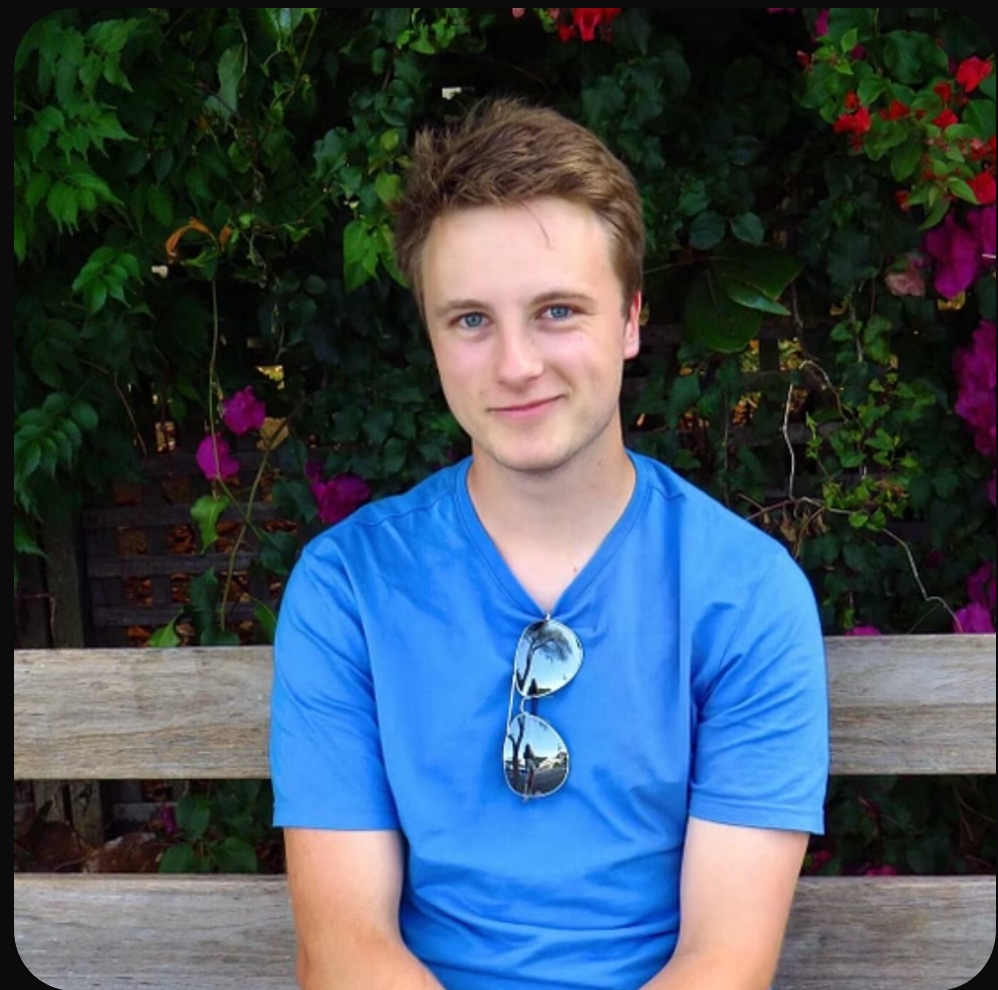
Early on with my SteelForFood Instagram account I decided to start a monthly “award” to showcase five knives that stood out to me. If you are a fan of trivia, the very first month of High Fives was the only time where I had six posts instead of five. And the reason for that anomaly was Skye Eilers. I was so touched by his post about a knife maker who had passed named Dave Gage that I had to do something to draw attention to it, so for one month five became six. While knife making is often a solitary exercise, it is the community that makes it something special.
To start off, please tell us a little about yourself.
Hi. My name is Skye Eilers, I’m a full-time knifemaker based in New Zealand. I’m 26 as of writing this (2025), and I feel very grateful to do this for a living.
What sparked your interest in knives?
I was born in the UK and lived there till I was eight. The castles and museums got me hooked on history, particularly Greek, Roman and medieval. When we moved to NZ I was able to be more outdoorsy and started arts and crafts with a fervor. I made bows and stick swords with my dad, and then built a forge when I was 12. I saved up pocket money for steel to make swords, but quickly realised they were too much work, haha.
So, I scrapped that idea and made knives instead. I quickly got obsessed.
What inspired you to do this and how did you learn?
I made all sorts of knives early on, but it was my first chef knife that got me truly interested. I love cooking, and the fact that knife outperformed anything we owned was inspiring. I learned on my own, tinkering away in the garage. I read what I could find online, and persisted through trial and error. More recently I’ve learned from fellow professionals, but the core was a long, error-filled, solo journey.
When did you start making knives?
I made my first when I was 13 in 2014. I started selling in 2018 and went full time in 2023.
What did you make your first knife with?
Some scrap mild steel I nicked from the metal class trash bin at school, and some firewood. I made a small hunting knife that weighed almost half a kg, but it was a start, haha.
Do you have a favorite knife you made, tell me about it?
I love all of the ones I finish, cliché to say. But, probably my favourite piece so far is my dagger Erebos. I poured about 200 hours into it over two years.
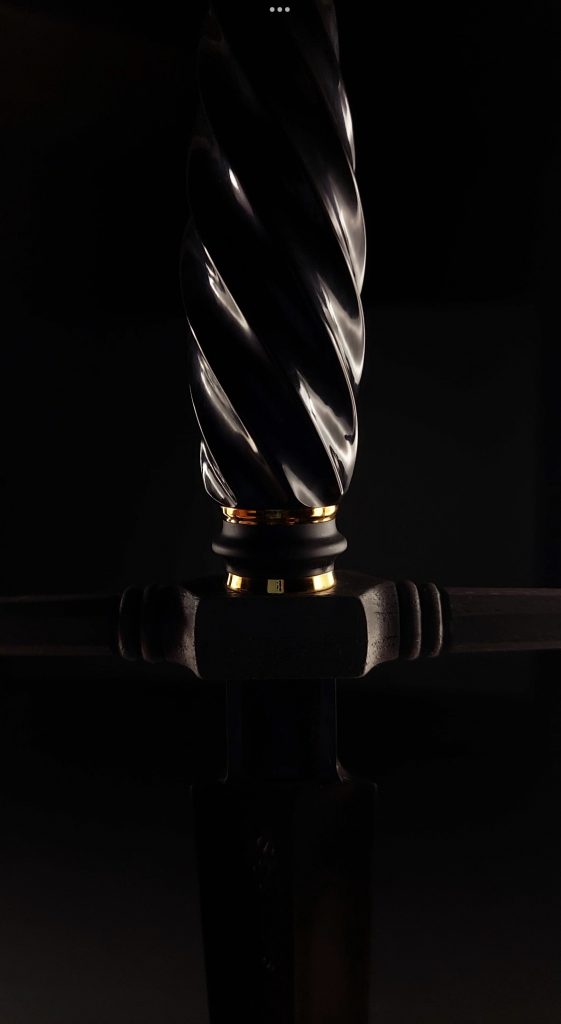
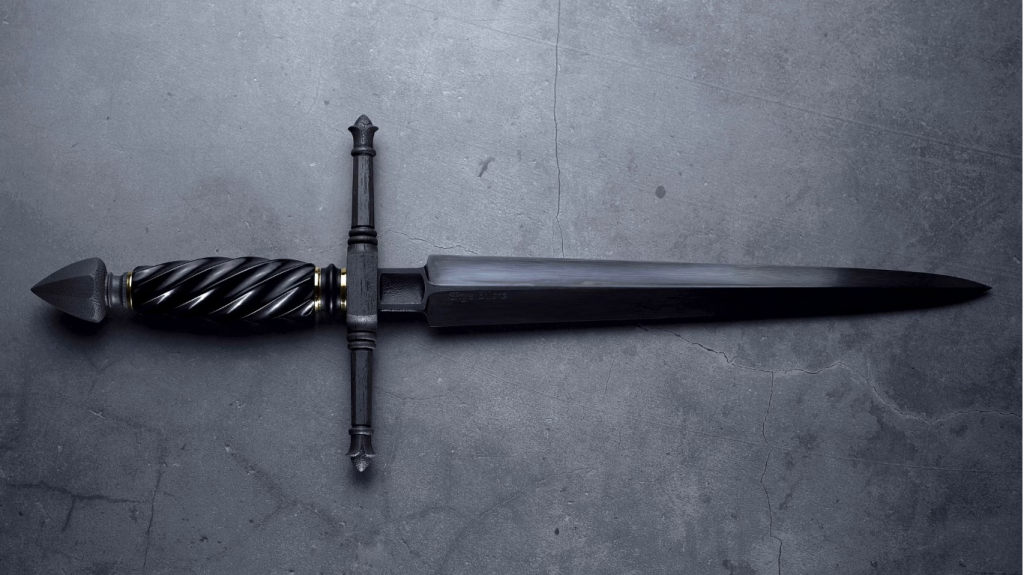
What is the most important aspect of a well-made knife?
Utility for me. I use that to encompass a lot, functional grinds and specs to suit the intended use, all being crafted to the highest level.
What keeps you going?
Money mainly, it keeps the lights on haha. However, I’d still make knives even if I wasn’t selling them, I’d just make a lot fewer. I think it’s the simple enjoyment of the process and the satisfaction of something well made for me.
What is your biggest struggle?
Overcommitting would probably be it. Too many ideas and not enough time in the day, and (fortunately) more demand that I can quickly satisfy.
What kinds of knives do you make?
Primarily chef knives, that’s most of what I make. But I also make the occasional EDC or art knife like daggers or bowies.
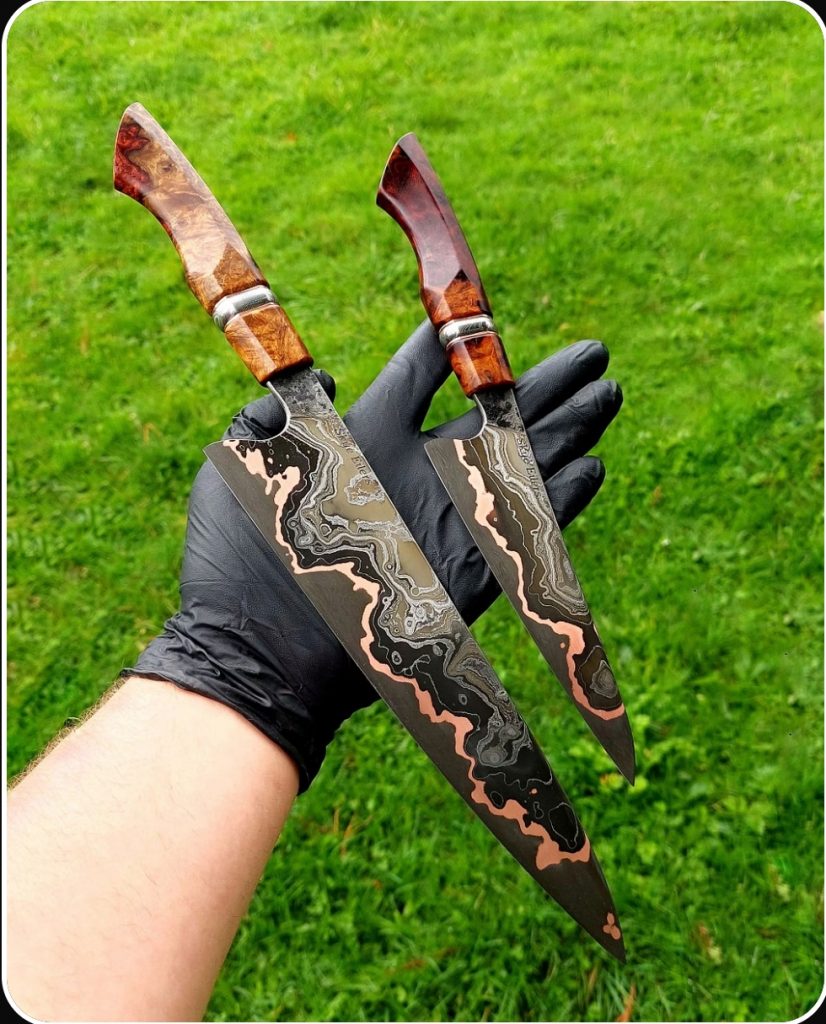
How did your background affect your approach to knives?
I actually studied to work in mental health and addictions counselling. I did that for 4 years, which was meaningful work. That was a different kind of creativity, and allowed me to build up the knife business slowly and naturally on the side.
More generally, I’ve always been arty and crafty, which I credit to some great teachers and most importantly my parents. They instilled a strong self-belief, and a tolerance for making mistakes that has been very helpful.
Who helped you early on?
My family mainly, with words of encouragement, help buying starter tools, and giving me a stable foundation to grow from.
I also integrated into the NZ knife scene over the last 8 years, which has been a great source of support and friendship.
Who are your influences?
Early on it was every talented knifemaker, particularly in the kitchen knife scene. In no particular order the ones I found early on were: Maumasi, Kramer, Kamon, Don Nguyen and Hazenberg.
Since I began properly selling though, I’ve worked hard to try and find my own voice in the scene. A tall order and a constant work in progress, but we all stand on the shoulders of great influences and I’m happy with what I’ve achieved so far.
What other knife makers out there impress you these days? Do you take inspiration from anyone else in the field?
I’m frequently inspired by other makers, those above and many others. Nowadays I find a lot of inspiration in the knifemakers I call friends here in NZ, and also in the world of folding knife makers. They really push the boundaries with materials and finishes.
Any specific breakthroughs or revelations in your knife making journey?
When I made my first chef knife, everything clicked. I don’t hunt or edc much, but I love cooking. Making a knife I could test and learn from made me hungry to push my knowledge.
The other main one was on patience. Once, when I was 13, I spent 3 days smashing pumice into dust and mixing it with wax to make buffing paste. I wanted to take blades from 60 grit off the grinder to a mirror polish and thought some home-made rock paste would do that. Eventually my Dad said “You realise you spent three days avoiding a 3 hour task, right?”
For me that was a humorous turning point, and I started working out how to do things **well** rather than wanting to rush, and how to improve efficiency with reflection and good processes.
What is the perfect knife?
I love a good chef knife, nicely balanced at the pinch, with a comfortable western or hybrid handle. But I think perfect is different for everyone.
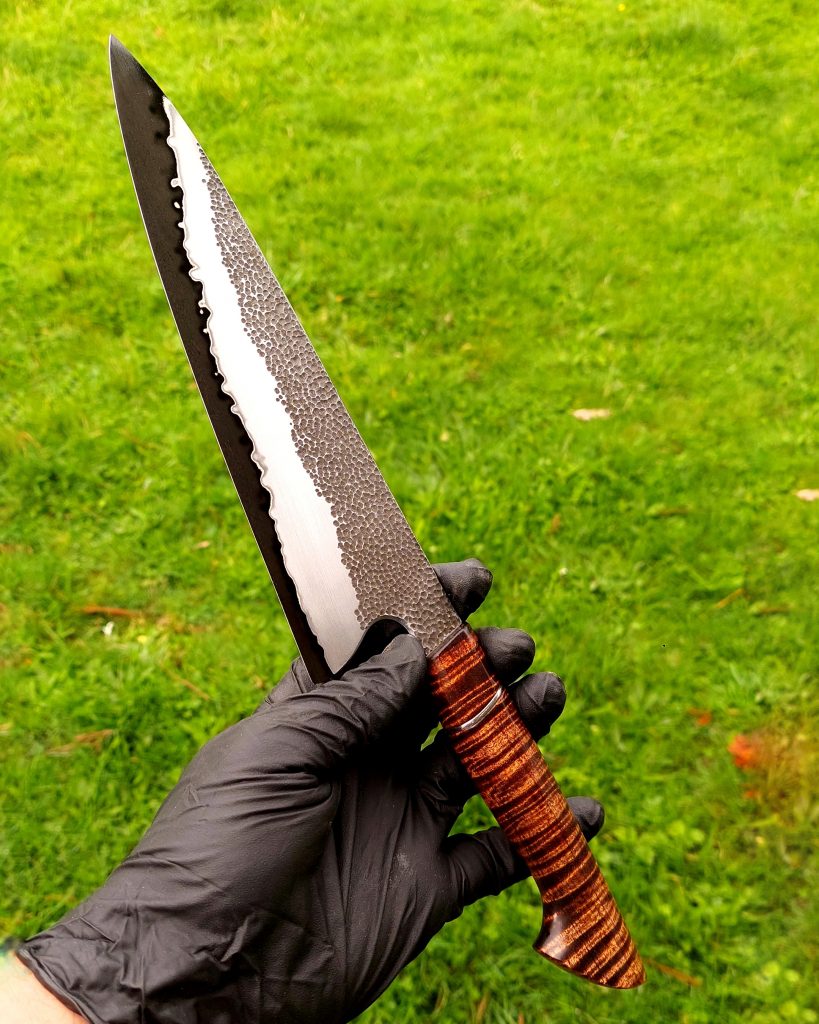
How do you approach knife testing?
For me, with measurements and then with produce. I have thickness tolerances at various points along a knife and up its bevel. I grind to meet those and then confirm performance by chopping up produce or making dinner.
For edc ones or bowies etc, I test on their intended tasks like cardboard, wood, or destructive test with antler.
How do you develop a design, select a steel, and fine-tune a heat treatment?
For customs I draw many of them, I made a video here actually that shows my process.
For my production series I took my many design iterations and boiled them down into some functional and beautiful designs that were as recognisably me as possible.
For steel I use mainly AEBL, 52100, and Vtoku2 san mai, or something fancy like 26c3 for Honyaki or Apex ultra/magnacut etc. I pick based on what I like, and what customers are after. I use Dr. Larrin Thomas’s info for heat-treat and confirm my results with my hardness tester and performance tests.
What is your favorite steel?
Probably san mai I’d say. I love the look when blackened, and the Vtoku2 I use has fantastic performance.
How has the knife world changed since you started?
It has grown a lot, mainly through the Internet. There are so many people doing it now, which is very cool to see. I think it’s becoming more open minded and less cliquey too, which is a good thing.
What’s up next for you? Any exciting new projects to tell us about?
Just chugging away at a long order list currently. I hope to do folders soon and finish up a load of very exciting customs in damascus clad apex ultra. Perhaps also expanding the production series too, when time allows.
To find out more about Skye and his work check out his website http://www.skyeeilersknives.com or his Instagram http://www.instagram.com/skye.eilers
2 responses to “Skye Eilers Knives”
-
Man, Skye seems to be an old soul. Interesting life that I’m not too surprised by. Wise beyond his years it seems. Craftsmen like him are what make this community special. He’s a product of the community and he’s reinvesting too. I look forward to what he’s got in store for us.
-
Yes, an old soul. Exactly how I feel.
-
Leave a Reply to steelf_Admin Cancel reply